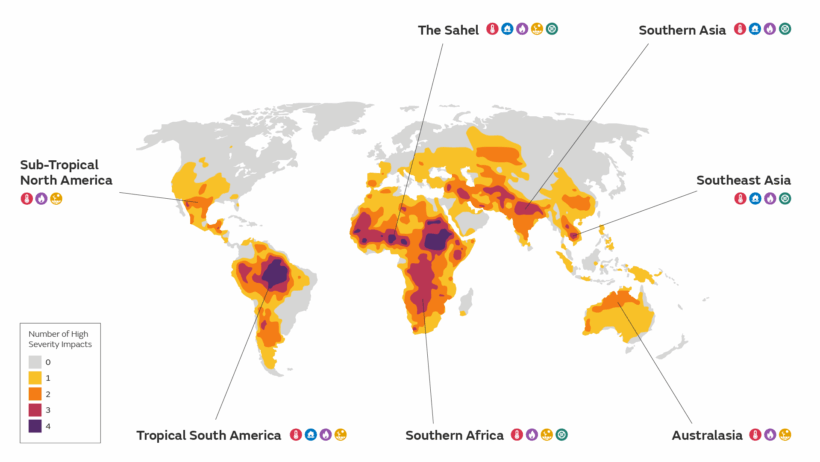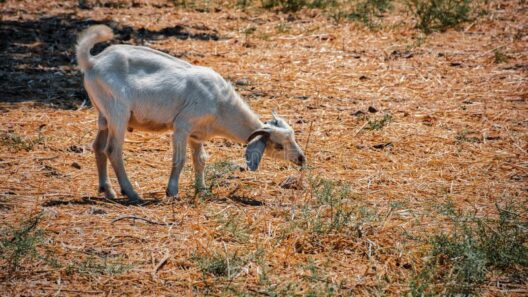Colorado, a verdant state often celebrated for its stunning Rocky Mountain vistas and diverse ecosystems, is now facing an existential challenge—one that subtly swells like the snowmelt-fed rivers in spring. As global temperatures escalate, how do we reconcile our love for this breathtaking land with the burgeoning realities of climate change? This playful inquiry seamlessly morphs into a pressing concern, as Colorado grapples with the multifaceted impacts of warming temperatures, shifting precipitation patterns, and the ensuing ecological ramifications.
The intricate tapestry of Colorado’s climate is woven from diverse threads of altitude, geography, and seasonal variability. The state showcases an array of climates, from the alpine tundra of its mountainous regions to the arid conditions of the plains. However, these climatic nuances are increasingly vulnerable to the overarching phenomenon of global climate change. As the earth warms, Colorado’s once-stable weather patterns are evolving, leading to a kaleidoscope of climate-related challenges.
One of the most palpable effects of climate change in Colorado is the increasing variability in precipitation. Historical data illustrates a noteworthy trend—a shift from consistent snowpack accumulation to more erratic precipitation patterns. This alteration has profound implications for water supply, agriculture, and wildfire risk. The mountain watersheds that feed the reservoirs vital for urban and agricultural needs are now experiencing diminished snowpack, a phenomenon that forecasts concerning implications for the state’s future water resources.
Furthermore, the agricultural sector, integral to Colorado’s economy, is facing an uncertain future. Farmers are already contending with a growing frequency of drought conditions that threaten crop yields. Reduced snowpack not only ensures less runoff during the warmer months but also means farmers may need to adapt their methods to sustain productivity. The challenge lies in balancing crop selection with changing climate conditions, which require a paradigm shift toward more resilient agricultural practices.
But the implications of climate change in Colorado transcend agriculture alone. The natural ecosystems, including forests, rivers, and wildlife habitats, are similarly under siege. The coniferous forests, known for their towering pines, are increasingly susceptible to bark beetle infestations, exacerbated by warmer temperatures and milder winters. These forest declines are not just a loss of biodiversity but also contribute to carbon release, further amplifying climate issues.
Moreover, Colorado’s iconic wildflower displays are at risk. Simply put, as the warming climate alters bloom times and the habitats suitable for various species, our cherished alpine meadows may soon become a memory of the past. This raises an unsettling question: Will future generations be able to experience the natural beauty that has become synonymous with Colorado?
Climate-induced wildfires present yet another formidable challenge. Longer fire seasons, exacerbated by rising temperatures and prolonged dry spells, have already resulted in catastrophic events, such as the devastating 2020 wildfire season. As wildfire frequency and intensity increase, communities face dire threats to safety and property. The ecological aftermath of these fires, including soil degradation and loss of habitat, will require extensive recovery efforts and adaptive management strategies.
Transportation is another area grappling with climate implications. Increased heat can lead to the expansion of road materials, creating hazardous driving conditions. Additionally, the growing reliance on automobiles in rural areas adds to carbon emissions. In an era of concern about air quality and greenhouse gas emissions, the pressing question becomes: how can Colorado adapt its transportation infrastructure to mitigate these impacts while fostering more sustainable urban development?
As the array of challenges facing Colorado becomes evident, so too does the need for a concerted response. Local governments, organizations, and citizens are seeking to implement strategies that enhance community resilience. Educating the public about climate issues—whether through workshops or community engagement—is paramount in fostering collective action. It is within these grassroots movements that solutions can emerge, propelling the state towards a more sustainable future.
Innovations in renewable energy also offer a beacon of hope. Colorado is increasingly investing in solar, wind, and hydroelectric power as alternatives to fossil fuels. These efforts not only reduce greenhouse gas emissions but also diversify the economy and create sustainable jobs. The transition to clean energy sources poses a unique opportunity to reshape Colorado’s economic landscape while addressing the climate crisis.
To encapsulate, Colorado’s climate story intertwines natural beauty with pressing challenges posed by global warming. As shifting precipitation patterns, agricultural uncertainty, and escalating wildfire risks unfold, the state stands at a critical juncture. Engaging communities, promoting adaptability, and fostering innovation are essential steps toward a more resilient future. The question remains: will Colorado rise to meet these challenges, or will the echoes of climate change resonate through its majestic Rockies, forever changing the landscape of this storied state? The answer lies within the hands of its citizens and policymakers, who possess the capacity to weave a narrative of resilience and sustainability.







